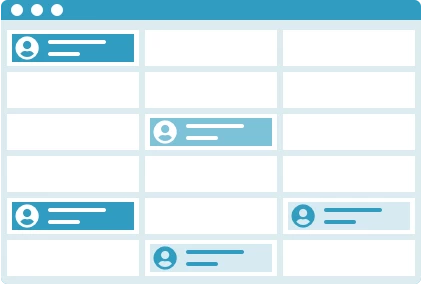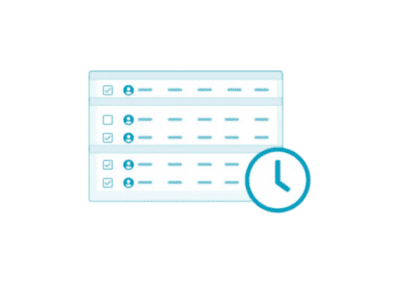Effective employee scheduling is one of the most critical aspects of running a successful business. Workforce management is often overlooked when it comes to business priorities. However, without the right people in the right place at the right time, operations wont’ run smoothly! Poor employee scheduling can cause a host of problems that can impact your bottom line, your team’s morale, and your customers’ experience. The impact of inefficient scheduling can be significant and far-reaching. In this post, we’ll explore the impact of poor employee scheduling on your business. We’ll also look at what you can do to avoid these issues.
Decreased Productivity

When employee schedules are poorly organized, employees may end up working fewer hours than they are needed. As well as that, others may work overtime. When employees are not scheduled enough, the workload may fall on fewer workers, leading to increased workplace stress, overwork, and burnout. On the other hand, scheduling too many employees or scheduling them for too long may lead to decreased productivity. Over-scheduled employees may become fatigued or disengaged. In fact, a recent study showed that 50% of workers reported feeling stressed at their jobs on a daily basis, 41% as being worried, 22% as sad, and 18% angry. Employee scheduling can help or hinder these figures depending on how you manage it.
Moreover, poor employee scheduling can lead to poor communication within the team, leading to work inefficiencies and poor productivity. Inadequate communication can lead to confusion, leading to workers not knowing their responsibilities and duties, causing delays and mistakes. Research by the US company, Gartner shows that 70% of the company’s mistakes are due to poor communication.
Unhappy Employees
When employees are not scheduled enough or scheduled at inconvenient times, they may become unhappy, demotivated, and disengaged. Workers who are consistently scheduled outside of their preferred hours may become unhappy. If these issues persist, they may leave for a job that offers a better schedule. Moreover, employees who consistently work overtime or are scheduled for longer shifts may feel overworked and undervalued, leading to burnout and a lack of motivation.
It’s essential to keep in mind that scheduling is a critical factor for employee satisfaction. When employees are satisfied, they’re more likely to be engaged, productive, and committed to the success of the business. It’s easy for schedulers to forget that they are scheduling real people with lives outside of work. Employees sense this and become increasingly dissatisfied at work.
Increased Turnover
The consequences of poor employee scheduling may result in high turnover. When employees are unhappy with their schedules, they may look for other opportunities. High turnover can be expensive for a business, as it leads to decreased productivity and increased costs associated with recruiting, onboarding, and training new employees.
Furthermore, high turnover can harm your business’s reputation, making it challenging to attract and retain top talent. If employees consistently leave your business due to poor scheduling, it can cause a negative impact on the perception of your business’s culture, work environment, and management.
Increased Costs

Poor employee scheduling can also lead to increased costs for a business. Overstaffing leads to unnecessary expenses on wages and benefits, while understaffing leads to increased overtime costs. Moreover, inefficient scheduling may cause unnecessary administrative work, such as dealing with last-minute schedule changes or employee absence.
Additionally, poor scheduling may lead to increased indirect costs, such as lower customer satisfaction and revenue. If your business consistently has long wait times or inadequate staffing levels, customers may become frustrated and may look for other options. This can lead to decreased revenue and decreased customer loyalty.
How to Avoid Poor Employee Scheduling
To avoid the impact of poor employee scheduling on your business, it’s essential to implement effective scheduling practices. Here are some tips to help you avoid poor scheduling:
Create a clear and concise employee scheduling process:
Develop a clear and concise scheduling process to ensure that all employees know the process for requesting time off, submitting availability, and receiving their schedules.
Use employee scheduling software:
Scheduling software can help automate the employee scheduling process, reduce errors, and provide real-time scheduling updates. This software can also help you manage labor costs, track overtime, and manage shift-swapping. In fact, Celayix employee scheduling software even enables you to provide flexible scheduling options such as self scheduling and shift bidding. This can help you keep your employees happy while also improving the scheduling process.
Communicate effectively:
Ensure that you’re communicating effectively with your employees regarding the scheduling process, their schedules, and any changes to the schedule. Ensure that your employees have access to their schedules and that they know how to reach management if they need to request a schedule change or discuss any issues they may have with their schedule. Through the Celayix mobile app, schedulers can send out alerts, notifications and shift reminders.

Prioritize employee preferences:
Consider employee preferences when creating schedules. Ask your employees for their preferred hours and scheduling requirements to ensure that they’re satisfied with their schedules. The Celayix mobile app also lets employees input their availability to work shifts. This information can be used in our automation tools such as the rules based engine and our AI scheduler.
Track and manage employee fatigue:
Use scheduling software to track employee work hours, and ensure that your employees are not working too many hours. Managing employee fatigue is essential to maintain their productivity, health, and well-being.
Offer incentives for employees to work undesirable shifts:
To incentivize employees to work during undesirable shifts, offer bonuses or other incentives to ensure that you have enough staff to cover all shifts.
Maintain open communication:
Encourage open communication between management and employees regarding scheduling issues. Ensure that employees know that they can communicate with management if they have any issues with their schedule, and ensure that management addresses these issues promptly.
Want to start scheduling your employees effectively?
Effective scheduling is critical to running a successful business. Poor employee scheduling can lead to decreased productivity, increased costs, employee turnover, and decreased customer satisfaction. It’s essential to prioritize employee preferences, communicate effectively, and manage employee fatigue to avoid the impact of poor scheduling. Implementing effective scheduling practices will lead to increased productivity, employee satisfaction, and customer loyalty, leading to a more successful and profitable business. If you’d like to learn more about Celayix software, why not sign up for a Free Trial today?





